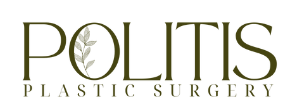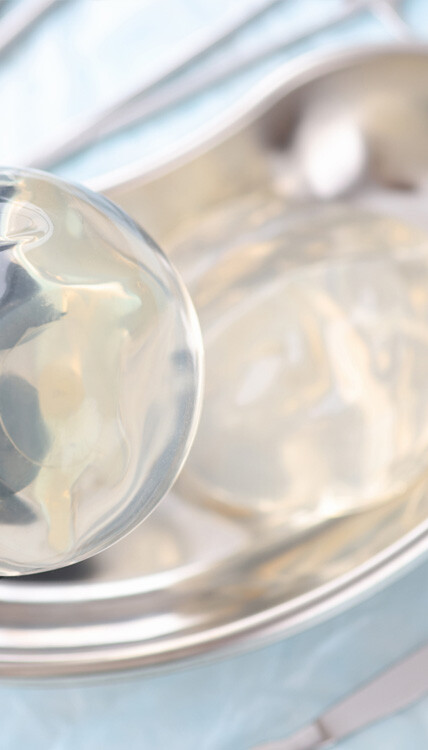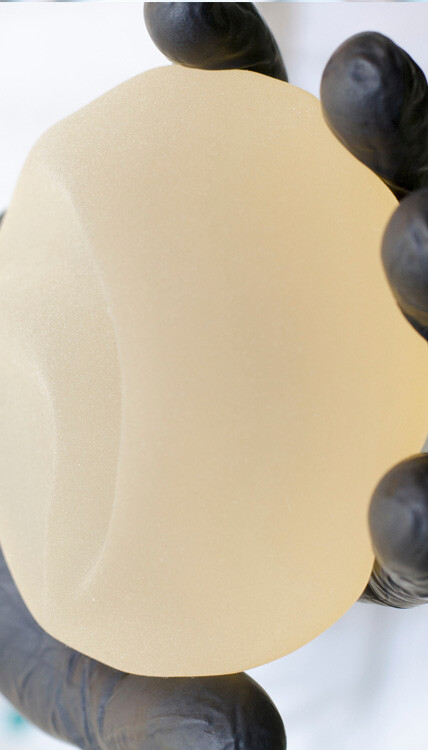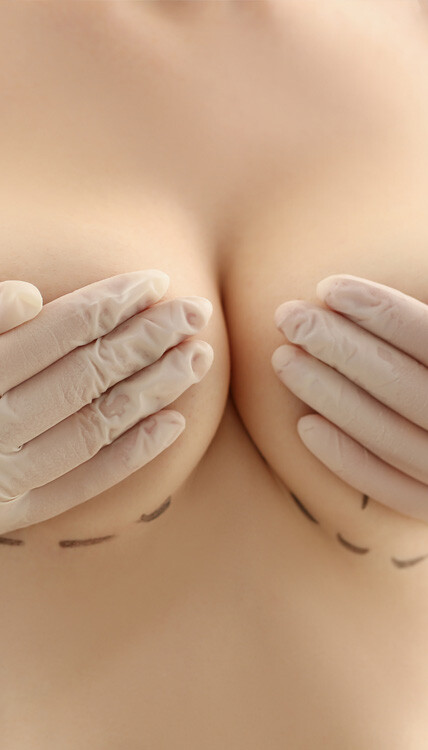Renuva is great alternative to autologous #fattransfer and #facial-rejuvenation . Given the well documented fat loss starting in our late 30’s and accelerated in the 40’s and 50’s… this is a good volumizer that recruits your own fat cells into a honeycomb lattice that lasts! Your own fat is recruited over 3 months to replace the shelf fat in syringe. No downtime and great for those with #fillerfatigue or those wanted a more lasting, natural look. What’s better than recruiting your bodies own fat? Call or DM our office for more info!
What is PRF Treatment?
PRF is now one of the most highly sought out cosmetic non-surgical procedures.
It is an all-natural solution that can treat areas in the face that show the first signs of aging, like under-eye hollows, deflated cheeks, and scalp for hair restoration.
This has platelets, fibrin, and white blood cells, which help achieve wound healing, collagen production, and improved overall elasticity.
As for its benefits, I will talk about it more in a future post!
Stay tuned!
And if you have some questions, comment them down below, and we will address them in our next post!
If you are interested in this procedure,
Call us: (813) 542 – 2587
Check our website: politisplasticsurgery.com
Visit us: 5016 West Cypress Street, Suite 200, Tampa, FL 33607
What Are The Signs You Have Capsular Contracture?
Capsular contracture develops in one or both breasts and can occur at any time, either in the weeks following breast implant surgery (this occurs most often) or, in some cases, years later. Its signs and symptoms often develop gradually over time, making it difficult to identify the complication early if you aren’t sure what you are looking for.
Early signs of capsular contracture may include a firm or tight sensation, pain, or asymmetry.
As the condition worsens, you may notice more obvious symptoms, including:
- Breast pain
- Asymmetry
- Firmness
- Tightness
- Round or ball-shaped breast
- High-riding breast
- Misshapen breast
If you start to notice any signs that you suspect are associated with capsular contracture or another breast implant complication, call your surgeon right away to be evaluated and learn your options.
Before and After Look with Refresher Facelift
This lovely patient flew in for a total refresh in office. She underwent mini facelift with SMAS plication to rejuvenate mid face, as well as myomodulation with toxin/filler combo to optimize structural support and minimize dynamic lines of expression.
Facial Treatment Guide: What Are My Options?
Here is a facial treatment guide with the options that you can avail in Politis Plastic Surgery.
A lot of the areas shown in the diagram can be treated with fillers. I use a wide range of fillers for different reasons. I have put HA filler to reflect hyaluronic acid-based fillers.
I use a variety of fillers, including the Restylane products, Juvederm Rep products, and a newer one called RHA1/2/3 made by Teosyal. I am using Radiesse more than sculptors as my biostimulator of choice.
I use Kybella to remove/treat submental fat, and also jowl fat, as well as other areas of the body with excess fat.
In addition, I’ve added neurotoxins to a lot of areas. I like to use neurotoxins in conjunction with a filler for myomodulation. This is a multi-modal approach to relax the vector of pull on the muscle which then can help optimize facial shaping with the fillers.
I also want to note that the RHA filler line is known for a layering effect. This means that the rheology or physics behind the fillers allow them to be layered on top of each other for optimal facial shaping. We also use Versa filler quite a bit for lips augmentation, chin, and nose-shaping.
Again, here are the products mentioned above:
FILLERS:
NEUROTOXINS: (General term for Botox which is a brand)
- Jeaveau
- Xeomin
Saline vs Silicone Breast Implants
Hey everyone, it’s Dr. Effie Politis and I just want to compare and contrast saline versus silicone implants, as we know women often undergo breast enhancement surgery to get a breast volume and shape that is more proportional to their body.
So, let’s start out with saline implants: We all know that saline is a fluid that is placed in a silicone shell. It is an “uncontrolled” type fluid, so it doesn’t have a lot of structural support. So it often causes rippling and wrinkling and it stretches out women’s lower-poles.
The advantage of a saline is that if you have a rupture or a tear, your breast will deflate and you can just look in a mirror and see that almost immediately in your body [it] just resorbs the fluid.
Silicone implants that are now in the market are medical grade and they are very cohesive, so they have a nice gel-to-shell ratio and they really help your breast tissue respond nicely. I do enjoy the feel of a silicone implant on my patients because it almost acts as one with their breast tissue. It also provides better structural support in the long term.
However, the issue with silicone implants is that we don’t often recognize a tear. This is why you have to be aware of your body. You have to follow-up with your plastic surgeon at regular surveillance intervals. If you do feel like there is a compromise, most women complain of some breast pain [or] perhaps some scarring around the implant, and we have some imaging modalities to diagnose this, please call our office or DM me on social media if you have any issues with your implants as I am a plastic surgeon with an expertise on breast surgery. Thanks so much.
What is Breast Explantation Surgery
Hi everyone, this is Dr. Effie Politis and I’d like to talk about a great article on the April edition of the PRS called contemporary strategies in breast explantation surgery.
So, what is explantation surgery? It is a surgery in which someone proceeds with removing their implants and not replacing them. I’m seeing quite a few patients that are interested in this surgery for various reasons. We all know that implants are man-made devices.
The first reason that women would opt to undergo the surgery is because of implant rupture. I tell women that breast implants are not a “one and done” device, they are a prosthetic that is placed in your body so you need surveillance and you likely will need one or several surgeries in the future if you opt for breast implants. There is a small chance of them rupturing. We can discuss more the difference between saline and silicone ruptures in the future.
Number two is Breast Implant-Associated ALCL (anaplastic large cell lymphoma), this is a rare lymphoma associated with textured implants which I do not use. So it’s not really an issue with my practice but I do see some patients with prior history of textured implants.
Number three is breast implant illness. This is a large topic that’s often discussed on social media. It’s a name given to patients for a wide range of symptoms. The current data shows that there is no cause and effect relationship between implants and these symptoms, however, we certainly are proponents of what women want to do with their bodies. So if they want their implants removed they certainly have the right to have that done. However, the data based on long term studies does not show whether explantation surgery reliably reduces these symptoms.
The last reason women want their implants removed is for non-medical reasons like effects of aging, weight changes, pregnancy, and shifting perspective in aesthetic beauty, as we know there is a movement towards smaller breasts. So women seeking explantation surgery just need to be aware of the risks and benefits in any adjunct surgeries that can be done to enhance their breasts. We look at each woman on an individual basis. It’s a woman’s choice to have their implants removed and we consider the patient’s risk profile, patient preference as well as safety when guiding them on whether explantation surgery is the right surgery for them. I would advise you all to always consult with a board-certified plastic surgeon with a specialty in breast surgery when considering these types of procedures. You can always DM me or look at my website as I’ll have more information. Thank you so much.
Subfascial Breast Augmentation with GalaSHAPE 3D Scaffold
This patient is 5’7″ and 166lbs.
She is a massive weight loss patient and had a mastopexy when she was younger.
After having 5 children, she wanted to correct the deflation in her breast and restore upper pole fullness.
She underwent bilateral breast augmentation with Sientra smooth round HSC+ silicone implants, 355cc, moderate profile.
This was a quick turn-over, 24-hour recovery breast augmentation procedure.
A massive weight loss patient who had a mastopexy or breast lift in the past likely has week tissues and ligaments that require internal support or scaffold for stable and optimal long-term results.
I had Galaflex placed to support her lower breast pole, so the implants do not bottom out.
Each patient is evaluated whether there is a need for the Galaflex “internal bra”.
Post-op photo is 5 days after.
[Tap to view in full on IGTV!]
Are you a candidate for this procedure?
Your best bet is to come in for a consultation to determine whether you are an ideal candidate, but typically, the ideal candidate is relatively healthy and maintains a healthy weight. If you are a candidate for traditional breast augmentation, you are likely a candidate for this procedure too.
For more info on our 24-hour breast augmentation procedure, check the link in our bio.
Do breast implants make you float?
Do breast implants make you float? Will it save you from drowning?
Those are some questions that a few may have wondered about breast implants at some point.
Here’s the thing, breast implants are NOT a floatation device. They will not make you buoyant, nor are they a suitable alternative for a life vest.
“Breast implants are different from the weight of the natural breast, but not by much. While fatty tissue weighs slightly less than water, saline will, as mentioned, weighs roughly the same, and silicone, slightly more. “
“The differences between the natural tissue and a breast implant are minor, and, to the untrained eye, virtually undetectable.”
While breast implants are naturally buoyant (as seen in the video), “when placed in the body, however, the buoyancy of breast implants demonstrated by benchtop testing becomes irrelevant. Post-surgery breasts are no more likely to drown you than they are to save you from drowning.”
So, to answer the question above, no, breast implants will NOT make you float, and it will NOT save you from drowning.
Now, if you know someone who says they want to get large implants to have a built-in life-jacket, you can conclusively tell them to take some swimming lessons instead. 😅
Fat Grafting Shows Promise for Cancer Patients with Radiation-Induced Skin Injury
Radiation Therapy (RT) is an effective treatment for a range of malignant conditions. It involves projecting high-energy photons towards a tumor, destroying the DNA of the tumor cells. With their DNA destroyed, the cancer cells lose their ability to divide and grow, and they eventually die.
Radiotherapy goals
When applied in the early stages, or when cancer has just begun to spread, radiotherapy can shrink or completely cure it. But radiation may also be used before surgery to shrink the tumor (neoadjuvant or pre-operative therapy) or after surgery to keep it from recurring (adjuvant therapy).
For cancer that has spread too much to be cured, radiation may be applied to keep the tumor smaller and help relieve problems such as pain, trouble swallowing, breathing difficulty or bowel blockages caused by advanced cancer.
Collateral damage
As radiation is projected to destroy cancer cells, the nearby normal cells may also be exposed to high-energy particles. Though most of the exposed normal cells tend to recover and go back to working the way they should, some cells, like skin cells, are extremely sensitive to the damaging effects of radiation and do not recover.
Because skin-sparing radiotherapy techniques are not yet possible, the skin is particularly vulnerable during radiation therapy for breast cancer, anal cancer, and head and neck cancer. A few months after radiotherapy, patients may develop acute radiation injury characterized by skin inflammation, peeling, pain, swelling and itching.
The symptoms may resolve with time, but in some cases the inflammation continues, resulting in tight, stiff skin (fibrosis) which leads to poor wound healing, skin ulcer and tissue loss. In addition, soft-tissue fibrosis may cause potentially severe functional and cosmetic problems which can adversely impact the quality of life.
Fat grafting after radiotherapy
Fat grafting is the process of removing fat from one area of the body and transplanting it into another area. It can be done in different body areas, including the breasts, buttocks and face.
During fat grafting, the surgeon removes fat from the donor area—usually the belly or thighs—using a liposuction machine. After the fat is harvested, it is prepared and then injected into the desired area. About 50-60 percent of the fat transferred survives; thus, more fat is usually injected than may be needed.
What happens after fat grafting?
Following the injection, the quantity and quality of fat tissue improve around the injection site. The surviving fat cells re-establish their blood supply at the new site and begin to divide, grow and differentiate.
Grafted fat contains adipose stem cells (ASCs) that have healing and regenerative effects on surrounding tissues.
After grafting, some stem cells in the grafted adipose tissue transform into different types of cells around the treated site, helping in wound healing, epithelization, and growth hormone secretion, all of which repair the damaged areas.
Adipose stem cells stimulate the secretion of factors needed for the regeneration of damaged areas. For example, they induce dermal fibroblasts and keratinocytes to release anti-oxidant enzymes such as superoxide-dismutase, helping to protect cells against oxidants. This process reverses radiation-induced soft tissue fibrosis and promotes healing.
Adipose stem cells also promote cytokine production, increase collagen production, and reduce collagen disorganization, resulting in improved skin quality.
The grafted fat inhibits apoptosis—a process that brings about death and removal of cells—helping to relieve fibrosis, minimize skin stiffness, relieve pain, and restore lost cell volume caused by radiation-induced skin injury. That is why, soon after fat grafting, the skin feels and looks healthier.
Benefits of fat grafting after radiotherapy
- Minimizes pain and itchiness of the skin
- Reduces tightness and stiffness of the skin
- Heals radiation damage
- Treats chronic skin ulcers
- Prevents disability
- Improves overall skin appearance, removing scars and depressions
- Make the skin thicker, softer, and healthier
- Gives improvements that continue over time
- Improves the treated area permanently
- Has no risk of rejection or allergic reaction
Exploiting the power of fat grafting
Do you have a scheduled radiotherapy session? Have you undergone radiation therapy and are struggling with radiation-induced skin injury?
At Politis Plastic Surgery, we provide fat grafting services for patients undergoing radiotherapy as a way of preventing or reducing post-radiation effects on the skin and subcutaneous tissue.
Dr. Effie Politis is a skilled and experienced plastic surgeon who uses fat grafting in cosmetic and reconstructive procedures. She understands that the stem cells in adipose tissues and organs can play a critical role in repairing post-radiation skin injuries. She makes sure to share the benefits of fat grafts with her patients.
If you have undergone radiotherapy, Dr. Politis can help you avoid or reduce pain and other symptoms of radiation-induced skin injury through fat grafting. After the grafting procedure, you will enjoy a more normal skin appearance, have seamless recovery following radiotherapy, and improve your quality of life.
For more information on fat grafting after radiotherapy, visit the Politis Plastic Surgery website.











